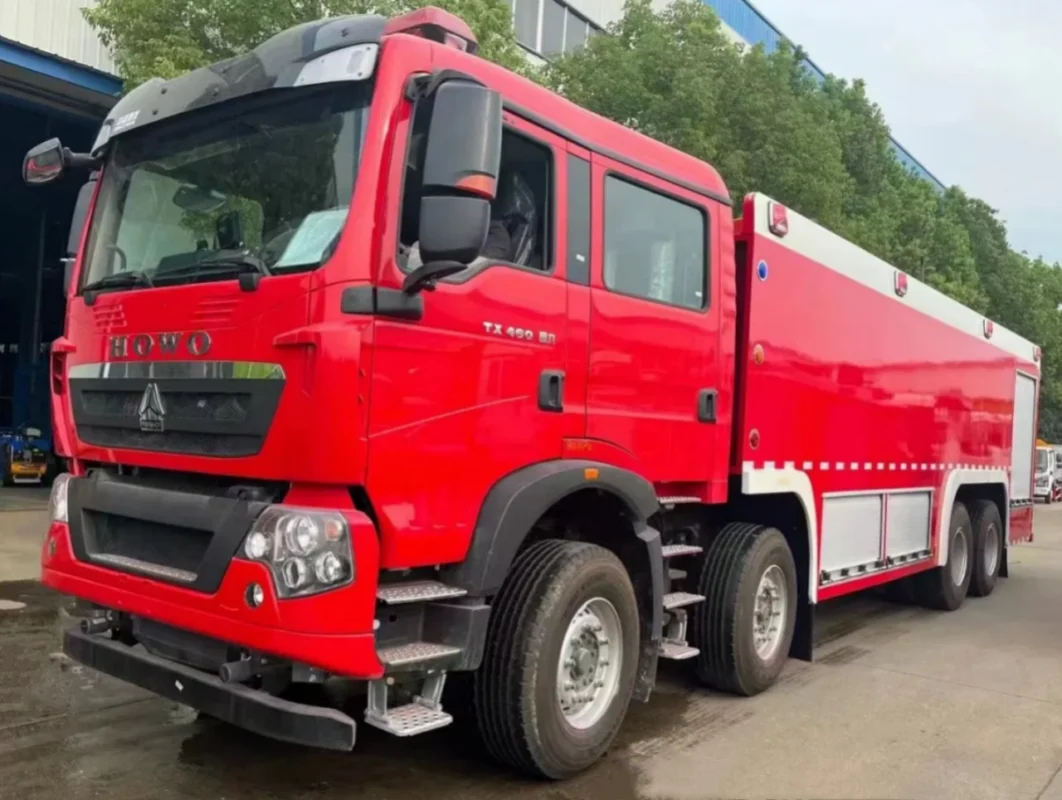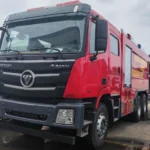When we see fire trucks racing to the scene of an emergency, we often refer to them simply as “fire engines” or “fire trucks.” However, within the fire service, these vehicles have specific names and functions. One such vehicle is commonly known as a “pumper.” But what exactly is a pumper, and what other names is it called? Let’s dive into the world of firefighting apparatus and answer the question: What is a pumper called?
Understanding the Role of a Pumper
A pumper is one of the most essential vehicles in any fire department’s fleet. As the name suggests, a pumper’s primary function is to pump water. It serves as the workhorse of structural firefighting operations. Pumpers carry hoses, water, and firefighting tools, and they are equipped with a powerful pump system designed to supply water to the fire scene.
These trucks are used to:
- Deliver water directly to the fire through hoses.
- Boost water pressure from hydrants.
- Support aerial apparatus with water supply.
- Carry necessary firefighting tools such as axes, nozzles, fittings, and ladders.
But the name “pumper” isn’t always the only term used. Depending on the region, fire department, or country, a pumper may be referred to in different ways.
Common Alternative Names for a Pumper
1. Engine or Fire Engine
In many parts of the United States and around the world, a pumper is commonly called a fire engine or simply an engine. This is the term most recognized by the general public.
For example:
- Engine 1, Engine 2, etc., are labels typically used to identify different pumpers in a department.
- “Dispatch Engine 4 to the scene” is a common phrase heard over fire department radios.
This terminology is deeply rooted in history. In the early days of firefighting, “fire engines” referred to hand-drawn or horse-drawn carts with manual pumps. Modern engines still serve a similar purpose—delivering water to fight fires.
2. Triple Combination Pumper
In technical or formal contexts, a pumper may be referred to as a triple combination pumper. This name reflects its 3 primary components:
- Pump (to deliver water)
- Water tank (onboard supply)
- Hose (for fire attack)
The National Fire Protection Association (NFPA) uses this term in its equipment classification. A triple combination pumper is the standard apparatus for structural firefighting, and most pumpers fall into this category.
3. Pumper Tanker or Engine Tanker
In rural or suburban areas where fire hydrants are scarce, pumpers may also carry more water. These are sometimes called pumper tankers or engine tankers, especially when they serve dual functions:
- Pumping water at the fire scene.
- Transporting large volumes of water from a water source.
This dual-role vehicle is crucial in areas lacking a robust municipal water system.
4. Class A Pumper
The term Class A Pumper is another formal designation. It refers to pumpers that meet certain performance criteria, such as the ability to deliver a minimum of 750 gallons per minute (GPM) at 150 psi from draft (according to NFPA 1901 standards). Most modern pumpers exceed these minimums and are often rated for 1,000 to 2,000 GPM.
This terminology is most commonly used in apparatus specification, procurement, or training documentation.
International Terminology
Just like with many things, terminology for firefighting equipment can vary significantly from country to country.
United Kingdom
In the UK, the equivalent of a pumper is often referred to as a Fire Appliance or Pumping Appliance. You might also hear:
- Water Tender
- Pump Ladder. These names describe the vehicle’s primary function—pumping water and carrying ladders.
Australia and New Zealand
In Australia and New Zealand, pumpers are commonly called urban pumpers or urban firefighting appliances. More specific terms might include:
- Pumper (general use)
- Heavy Pumper (larger version)
- Light Pumper (smaller, more maneuverable version)
Germany and Europe
In Germany, pumpers are referred to as Löschfahrzeug (literally “extinguishing vehicle”), with further designations like:
- LF 10/6 or LF 20/16, which describe pump and water tank capacities. Other European countries have similar classification systems with local language variations.
Key Features That Define a Pumper
Regardless of what it’s called, a pumper usually includes:
- Pump system: Ranges from 750 to 2,000 GPM.
- Water tank: Typically 500 to 1,000 gallons.
- Hose storage: Various types of hose for different fire scenarios.
- Tools and equipment: Halligan bars, nozzles, SCBA gear, thermal imaging cameras, etc.
- Crew seating: Typically holds 4-6 firefighters.
Some pumpers may also include foam systems for flammable liquid fires, pre-connected hose lines (also called preconnects), and advanced electronic control panels.
Specialized Pumper Variants
Fire departments often adapt pumpers for specific needs, leading to variants such as:
- Rescue Pumpers: Combine fire suppression and rescue tool capabilities.
- Mini Pumpers: Small units for rapid response in tight urban areas.
- Wildland Engines: Pumpers adapted for off-road and brush fire environments.
- CAFS Pumpers: Equipped with Compressed Air Foam Systems for superior fire suppression.
Each of these is still a pumper at heart, but modified to serve specialized missions.
Conclusion
So, what is a pumper called? The short answer: it depends on who you’re asking and where you are. In the U.S., it’s often referred to as a fire engine, engine, or triple combination pumper. In other countries, it might be a pumping appliance, water tender, or Löschfahrzeug. Regardless of the terminology, all of these names refer to a vehicle designed to deliver water and tools to the fire scene—the backbone of nearly every firefighting operation.
Understanding the different terms for a pumper not only helps in recognizing the global nature of firefighting but also deepens our appreciation for the complexity and coordination behind emergency services. Whether it’s Engine 5 responding in New York City or a Pump Ladder rolling out in London, the mission is the same: protect lives and property through rapid, efficient fire suppression.











